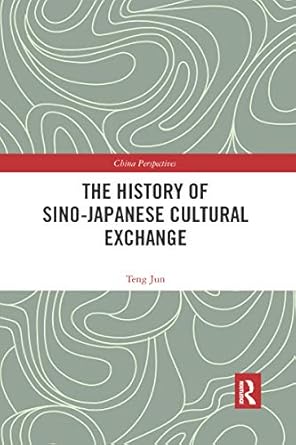The Sino-Japanese cultural exchange has a rich and multifaceted history, characterized by a complex interplay of influences that have shaped the cultural landscapes of both China and Japan. Understanding this exchange requires delving into various aspects such as historical interactions, art, literature, philosophy, and modern implications. Each facet contributes to a deeper comprehension of how these two nations have influenced one another over the centuries.
Historically, cultural exchanges can be traced back to ancient times, especially during the Tang Dynasty in China (618-907 AD). The period was marked by significant interactions via the Silk Road, facilitating the transfer of goods, ideas, and philosophies. Notable were the exchanges of Buddhist teachings, which emerged as a major spiritual influence in Japan. The introduction of Buddhism drastically altered Japanese religious practices and art, prompting the development of temples and sculptures inspired by Chinese aesthetics.
Literature also plays a central role in the Sino-Japanese cultural exchange. One of the most remarkable aspects is the transmission of literary forms, particularly poetry. The Chinese practice of writing in classical Chinese was adopted by Japanese scholars, leading to the creation of works such as the “Tale of Genji,” which reflects Chinese storytelling techniques. Over centuries, Japanese poets would often emulate Chinese styles, manifesting an enduring relationship that enriched both languages and cultures.
The influence of Confucian philosophy is another pivotal element in the exchange. Confucian ideals of morality, social hierarchy, and governance laid the groundwork for various aspects of Japanese society. During the Edo period (1603-1868), Confucianism gained prominence, shaping governance and education in Japan. This philosophical exchange fostered a mutual respect for social values and communal cohesion that persists to this day.
Artistic endeavors further illustrate the dynamic cultural interactions between China and Japan. Chinese landscape painting significantly influenced Japanese art, leading to the emergence of distinct styles such as ink wash painting. The incorporation of Chinese techniques and themes can be observed in many Japanese artworks, ranging from ceramic glazes to textiles. Similarly, during the Edo period, ukiyo-e (woodblock prints) began reflecting influences from Chinese art forms, culminating in a unique fusion that highlighted both cultures.
The culinary arts represent another facet where cultural exchange thrives. Chinese immigrants significantly shaped the gastronomic landscape of Japan by introducing various ingredients and cooking techniques. Dishes such as ramen, which evolved from Chinese wheat noodle soup, exemplify how culinary practices have been transformed through cultural interaction. Such exchanges have forged a shared appreciation for gastronomy that spans both national identities.
In contemporary times, the cultural exchange continues through various mediums, particularly through pop culture. The rise of manga and anime has become a phenomenon resonating in both countries. While rooted in Japan, these forms of entertainment draw inspiration from traditional Chinese storytelling and aesthetics. The globalization of these art forms facilitates a reciprocal exchange whereby Chinese narratives and styles are increasingly infused into Japanese media products.
The modern relationship between China and Japan also extends into technology and innovation. As both nations vie for leadership in technological advancement, their collaboration yields cultural exchange through innovation. This dynamic fosters a shared understanding of modern challenges, particularly those related to environmental sustainability. Dialogue between the two has emphasized essential issues such as climate change, resource management, and ecological preservation.
Furthermore, educational exchanges play a vital role in contemporary Sino-Japanese relations. Academic institutions in both countries facilitate programs that allow students to immerse themselves in each other’s culture and language. Language study, cultural workshops, and joint research initiatives are avenues through which individuals develop cross-cultural competencies, enhancing mutual understanding and collaboration.
Despite the historical and contemporary interactions, the Sino-Japanese cultural exchange has not been devoid of challenges. Historical grievances, particularly related to wartime actions, occasionally cast a shadow on cultural diplomacy. Nonetheless, efforts have been persistently made to cultivate cultural understanding and rapprochement through festivals, exhibits, and collaborative projects aimed at reconciling past adversities.
In conclusion, the Sino-Japanese cultural exchange epitomizes the dynamic interplay between two rich civilizations. From historical interactions that laid the groundwork for mutual influence to contemporary collaborations that address global challenges, this cultural interplay remains vital in shaping the identity and trajectory of both nations. The layers of this exchange—encompassing literature, art, philosophy, gastronomy, and modern engagement—reveal a profound interconnectedness that continues to evolve. Through resilience and dialogue, greater understanding and appreciation cultivate a narrative of cooperation that transcends borders.
